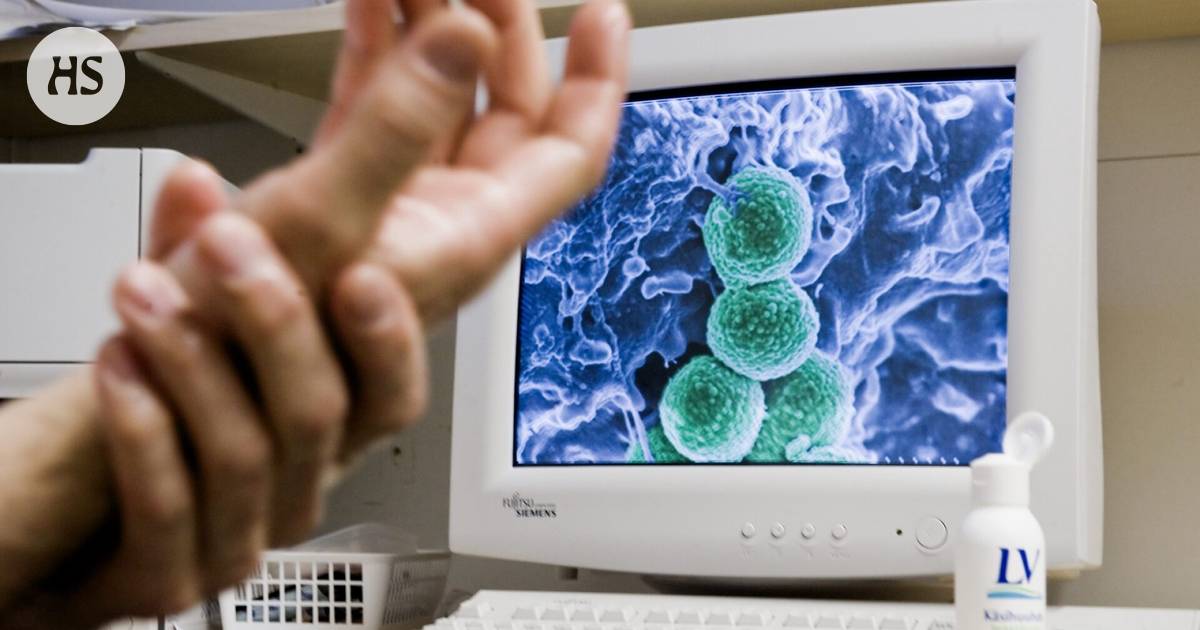Antibiotics|The forecast published in an authoritative medical journal is the first in which the threat of antibiotic-resistant bacteria is assessed worldwide.
The summary is made by artificial intelligence and checked by a human.
Antibiotic-resistant bacteria could kill 39 million people by mid-century.
The Lancet published a global estimate based on data from 250 million people in more than 200 countries.
Infections and deaths of people under five have decreased, but deaths of people over 70 have increased by 80 percent.
In particular, Staphylococcus aureus, known as hospital bacteria, has killed more and more people.
Current ones antibiotic-resistant bacteria threaten to directly kill 39 million people by mid-century, especially the elderly. In addition, antibiotic-resistant bacteria are linked to up to 169 million deaths.
In 2050, superbugs may already kill 1.9 million people. They are also involved in more than eight million deaths each year.
A cold review was published by an esteemed medical journal Lancet. The assessment is the first in which the threat of superbugs has been assessed worldwide.
It is based on data from 250 million people in more than 200 countries, such as hospital data, death statistics and statistics on antibiotic use.
Jo between 1990 and 2021, up to one million people have died annually from infections for which there is no longer a cure. Antibiotics are no longer effective against all bacteria because careless use has strengthened pathogens.
On the positive side, infections and deaths among young children have decreased. The number of victims under the age of five has halved and is still decreasing. As a counterbalance, infections can bulletin to be even more difficult if they get sick.
On the other hand, Deaths of people over 70 increased by 80 percent. And according to research, elderly people will die from infections caused by superbugs even more than twice in 2050.
Newspaper The Guardianissa the expert linked the deaths of the elderly to the hospital treatments that a person may need as they get older. The danger is infection caused by so-called hospital bacteria.
In all countries, the hospital is the most suitable place to acquire antibiotic-resistant bacteria, he also summarized HS extensive science article at the beginning of the year.
About superbugs more than twice as many people were killed by what was known as hospital bacteria Staphylococcus Aureuksen strains resistant to antibiotics (MRSA) when looking at the years 1990-2021. The number of victims of this methicillin-resistant bacteria more than doubled. In Finland, it has been possible to curb its spread, Health library tells.
Carbapenem-tolerant bacteria are also increasing. Such are, for example, resistant Escherichia colin and Klebsiella pneumoniaen the positions.
Means reducing the threat of superbugs is known, but the development of, for example, new antibiotics or replacement drugs is slow and difficult.
The unnecessary use of current antibiotics should be curbed, because it leads to the strengthening of superbugs.
The study recommends avoiding infections and vaccinations. The justification may be that vaccinations can reduce the use of antibiotics. For example, pneumococcal vaccination prevents ear infections in children, for which antibiotics were often prescribed in the past.
The corona pandemic somewhat reduced deaths caused by superbugs in 2021. It was apparently due to, for example, limiting human encounters. However, it only temporarily reduced the threat of superbugs.
Super bacteria Deaths caused by
Until now, Deaths caused by antibiotic resistance increased especially in sub-Saharan Africa and sub-Saharan West Africa, tropical South America, North America, Southeast Asia and South Asia.
Correction September 18 at 8:15 AM: Clarified that people were killed specifically Staphylococcus aureuksen strains resistant to antibiotics. The bacterium in question is otherwise common in humans. September 19 at 9:05 a.m.: Added the words “resistant strains” Escherichia colin and Klebsiella pneumoniaen connection. Removed description of bacteria.
